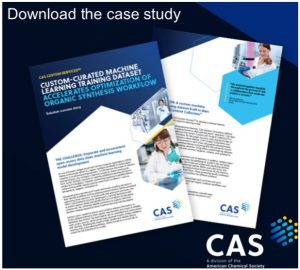India’s ethanol blending program, aimed at reducing emissions and boosting energy self-reliance, faces water usage, land management, food security, and sustainability challenges, necessitating a shift toward second-generation biofuels and sustainable practices.
The Ethanol Enigma
india’s ambitious push towards blending ethanol with petrol, modelled on the successes of countries like Brazil and the United States, is a part of its strategy to reduce greenhouse gas (GHG) emissions and achieve energy self-reliance. The ethanol blending programme is also seen as a means of boosting rural incomes and reducing dependence on crude oil imports, which cost over $130 billion annually (2023-24). However, this initiative relies heavily on water-intensive crops such as sugarcane, rice, and corn, raising significant concerns regarding water management, land use, and food security.
Water Footprint
The production of ethanol from sugarcane, rice, and corn requires vast amounts of water. The Water Footprint Network estimates that producing 1 litre of ethanol from sugarcane requires 2860 litres of water, while rice demands around 2500 litres per kilogram and corn about 900 litres per kilogram. India’s ethanol blending target of 20% (E20) by 2025 demands 1016 crore litres of ethanol annually. To meet this, substantial amounts of water will be required: For sugarcane-based ethanol alone, this could mean consuming 2.9 trillion litres of water annually, equivalent to the total annual water needs of over 200 million Indians.
India’s major sugarcane-producing states—Maharashtra, Karnataka, Tamil Nadu, and Uttar Pradesh—are already grappling with water scarcity. For instance: In Maharashtra, sugarcane occupies just 4% of the total cropped area but consumes over 60% of the state’s irrigation water. Karnataka, another drought-prone state, uses more than 80% of its surface water for sugarcane cultivation. Such water-intensive practices are unsustainable in a country where 54% of groundwater wells are declining, according to the Central Ground Water Board (2022). Diverting water for ethanol crops may intensify competition between agriculture, domestic consumption, and industrial needs.
Groundwater extraction has been accelerating in sugarcane-producing areas. Over-reliance on irrigation for ethanol crops could exacerbate the depletion of aquifers, particularly in states like Punjab and Haryana, where water tables are already falling by 1 meter annually.
Land Use Challenges
The demand for ethanol crops necessitates significant land allocation. For instance, to meet E20 targets, an estimated 5.5 million hectares of additional land may be required. This could lead to conversion of food crop land to ethanol crop land, reducing food availability and also deforestation and biodiversity loss in areas cleared for sugarcane or corn cultivation.
In 2022, India dedicated 5 million hectares to sugarcane, up from 4.6 million hectares in 2020, at the expense of other crops. This trend risks reducing the production of pulses, oilseeds, and coarse grains, which are vital for food security and nutritional balance.
The expansion of sugarcane monoculture has long-term environmental consequences, including soil degradation and reduced land productivity. Continuous sugarcane cultivation depletes soil fertility, leading to increased use of fertilisers and agrochemicals. Repeated cultivation of the same crop can lead to declining yields over time, undermining sustainability.
Food Security
Ethanol production from food crops directly competes with food availability. In 2021-22, the government allocated 3.6 million tons of surplus rice from the Food Corporation of India for ethanol manufacturing. While this helped alleviate stockpiling issues, it also raised concerns about diverting food stocks in a country where 38% of children under five suffer from stunted growth. Corn, another key feedstock for ethanol, has seen a significant rise in demand due to its dual use as food and fuel. This has led to Corn prices surging by 20% between 2021 and 2023, affecting animal feed industries and rural households reliant on corn as a staple.
The diversion of food crops to ethanol production has a ripple effect on food inflation. According to the Food and Agriculture Organisation, global food prices tend to rise when grains are diverted for biofuels. India, being a net food exporter, could face challenges in balancing domestic needs with international commitments.
Sustainability Concerns
Ethanol blending reduces tailpipe emissions, but the environmental benefits are undermined by the carbon footprint of ethanol crop cultivation. The intensive use of fertilisers, pesticides, and energy for irrigation adds to GHG emissions. Land-use changes, including deforestation for sugarcane or corn cultivation, release stored carbon into the atmosphere.
Sugarcane ethanol has an Energy Return on Investment (EROI) of 8:1, meaning it produces eight times the energy invested in its production. While this is relatively efficient, the high water and land requirements diminish its overall sustainability.
Second-Generation (2G) Biofuels
India has begun exploring 2G biofuels derived from agricultural residues like bagasse, rice husks, and wheat straw. These offer a more sustainable alternative, as they do not compete with food crops or require additional land. However, 2G biofuel technology is still nascent and cost-intensive in India. Scaling up requires significant investment in infrastructure and R&D.
Socio-Economic Dimensions
The ethanol programme provides economic benefits to farmers by ensuring stable prices for sugarcane and other feedstocks. For example, sugarcane farmers in Uttar Pradesh have seen an 11% rise in income due to ethanol-linked demand. However, this benefit is concentrated among a small segment of farmers, primarily those with access to irrigation and large landholdings. Marginal farmers, who rely on rain-fed agriculture, often do not reap similar benefits.
The government has allocated over ₹3,000 crore in subsidies to support ethanol procurement and blending. Critics argue that these funds could be better utilised in promoting truly renewable energy sources like solar and wind, which have a lower environmental impact and greater scalability.
Path ahead
- Promote Second-Generation Biofuels
Invest in 2G biofuel technology to minimise competition between food and fuel. Agricultural residues such as sugarcane bagasse and rice husks have immense potential in India. Develop infrastructure to collect and process biomass efficiently
2. Limit Water-Intensive Crops
Restrict sugarcane cultivation in water-scarce regions. States like Maharashtra should encourage the cultivation of less water-intensive crops like millets. Introduce pricing mechanisms to discourage over-extraction of groundwater for ethanol crops.
3. Encourage Sustainable Farming Practices
Promote drip irrigation and other water-efficient techniques for ethanol crops. Encourage crop rotation and intercropping to maintain soil fertility and biodiversity.
4. Diversify Feedstocks
Explore alternative feedstocks such as bamboo, algae, and industrial waste for ethanol production.
5. Reassess Ethanol Targets
Evaluate the feasibility of E20 blending in the context of India’s unique water and land constraints. Adjust targets to balance environmental, economic, and social objectives.
Epilogue
Ethanol blending represents a significant step in India’s quest for cleaner fuels and energy security. However, its current reliance on water-intensive crops like sugarcane and rice raises critical questions about sustainability. The diversion of scarce water and fertile land for ethanol crops risks exacerbating water scarcity, food insecurity, and environmental degradation in the long term. To ensure that ethanol blending aligns with the principles of sustainable development, India must transition to second-generation biofuels, diversify its feedstocks, and adopt more efficient agricultural practices. A holistic approach that balances energy needs with environmental and social considerations is essential to make ethanol blending a truly sustainable solution for the future.
Readers’ responses may be sent to: k.sahasranaman@gmail.com or chemindigest@gmail.com

































